NVIDIA Tegra Note 7 Review
by Brian Klug on November 12, 2013 9:01 AM EST- Posted in
- Tablets
- Mobile
- Tegra 4
- NVIDIA
- Tegra Note
Battery Life
Battery life is still a big concern for mobile devices, and remains a regular emphasis in our reviews. The Tegra Note 7 ships with a 15.17 watt hour battery, essentially par for the course in the 7-inch tablet space it occupies. As a reminder, Tegra 4 consists of 5 ARM Cortex A15s, 4 synthesized for performance, 1 shadow or “energy saver” core synthesized for lower power and lower frequency. In the case of the Tegra 4 SoC inside Tegra Note, the shadow core seems to work up to a frequency of 696 MHz. The Tegra Note 7 includes an interesting setting which allows one to configure between a high performance, balance, and power saver mode. I’ve been begging OEMs for something like this for a while now, with granular control of the governor for CPU and other power/performance settings without the need for root. Right in the settings shade there’s a shortcut to these settings, with balance selected as default.
Major kudos to NVIDIA for shipping something so close to what I’ve been asking for, something which by the way is the long term solution to the “performance mode” CPU optimizations we’ve been talking about for so long now, which the Tegra Note does not exhibit any symptoms of having. Balance doesn’t limit frequency and sets the max number of cores to 4, save battery sets the maximum number of cores to 2 and a frequency limit of 1.8 GHz (which oddly enough already is the limit of this platform) along with an app FPS limit of 30. I didn’t notice any change with maximize performance selected, and oddly enough the 60 FPS limit due to vsync remained in place.
We’ll start with our typical WiFi web browsing battery life test. Here we see a good combination of regular spikes in CPU usage with idle time, hopefully simulating constant, reasonably paced usage. As always the display is set to exactly 200 nits and configured the same way we always configure devices for maximum consistency.
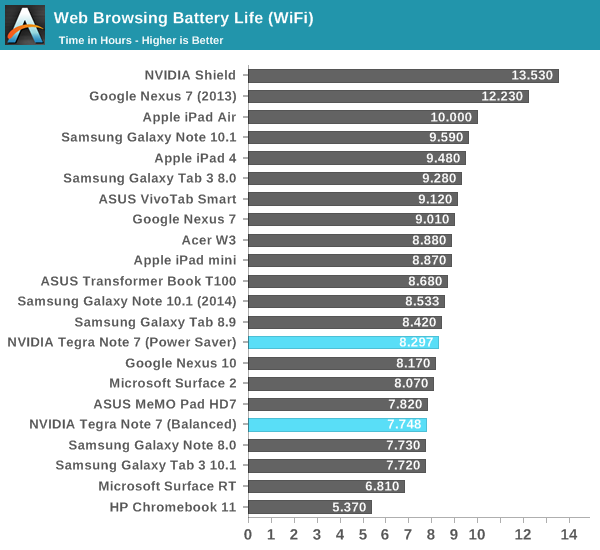
I tested the WiFi browsing battery life in both the power saver and balanced mode since the web browsing test has a good CPU workload mix that would flesh out a difference. There ends up being a 7 percent difference in battery life between the two here. I suspect NVIDIA could set the CPU maximum frequency a bit lower without trading off much real world performance, although the big consumer really is display. Unfortunately compared to the Nexus 7 (2013) the Tegra Note lasts quite a bit less on battery.
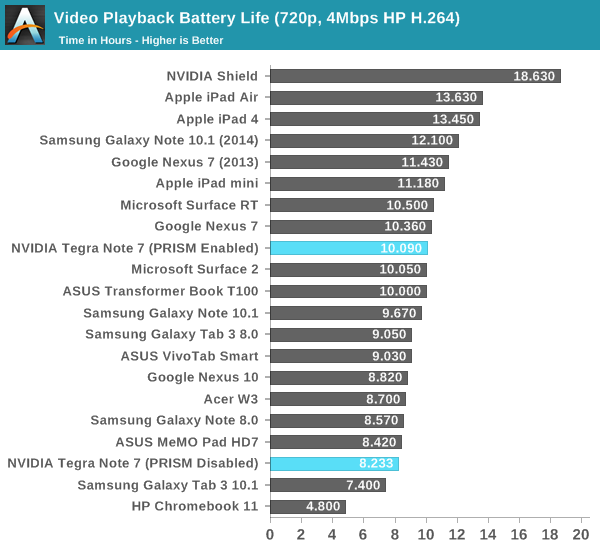
Our video playback test is unchanged and consists of a 720p H.264 high profile Blu-ray transcode played over and over. Here the Tegra Note surprisingly enough also isn’t able to push out much further, in spite of a workload that should pretty much be entirely shadow core (the +1 energy saver core) and video decode dominated. The fact that WiFi web browsing and video playback times are so close together makes me suspect the majority contributor to battery drain in the Tegra Note is display.
Update: I originally tested video playback with NVIDIA's PRISM dynamic backlight feature disabled since this was turned off for display testing. With it enabled and the display set again to 200 nits the Tegra Note is able to almost precisely nail the 10 hour video playback time that NVIDIA claimed, a much better result.
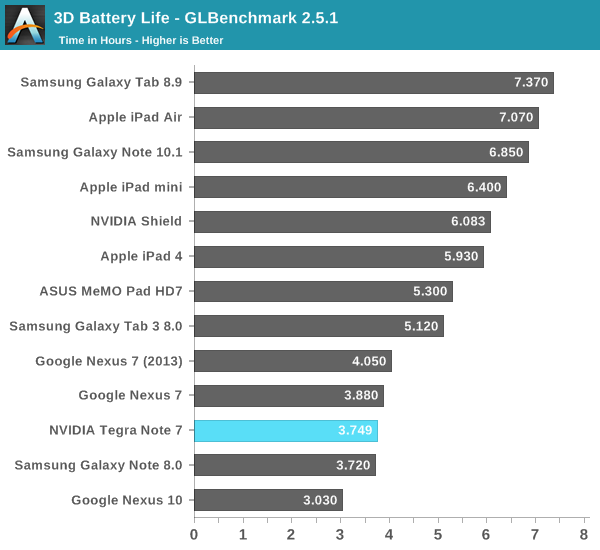
I also ran the Tegra Note through our 3D battery life test which is a part of GLBenchmark. Here the Tegra Note performs very close to the current and previous generation Nexus 7.
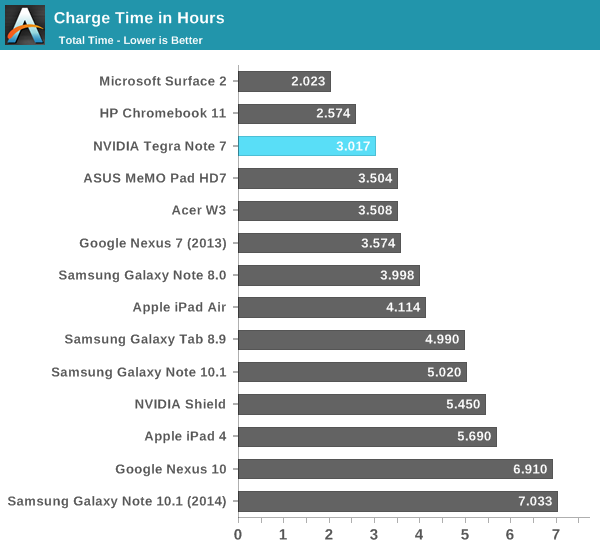
Finally I tested charge time on the Tegra Note, which utilizes the same charging signaling and charger as Shield. Tegra Note is able to draw up to 2 A from compatible chargers during the fast charge part of the charge cycle. I noticed the same charge curve and behavior, and charging on the Tegra Note ends up being very quick at just over 3 hours from a completely drained state to fully charged.


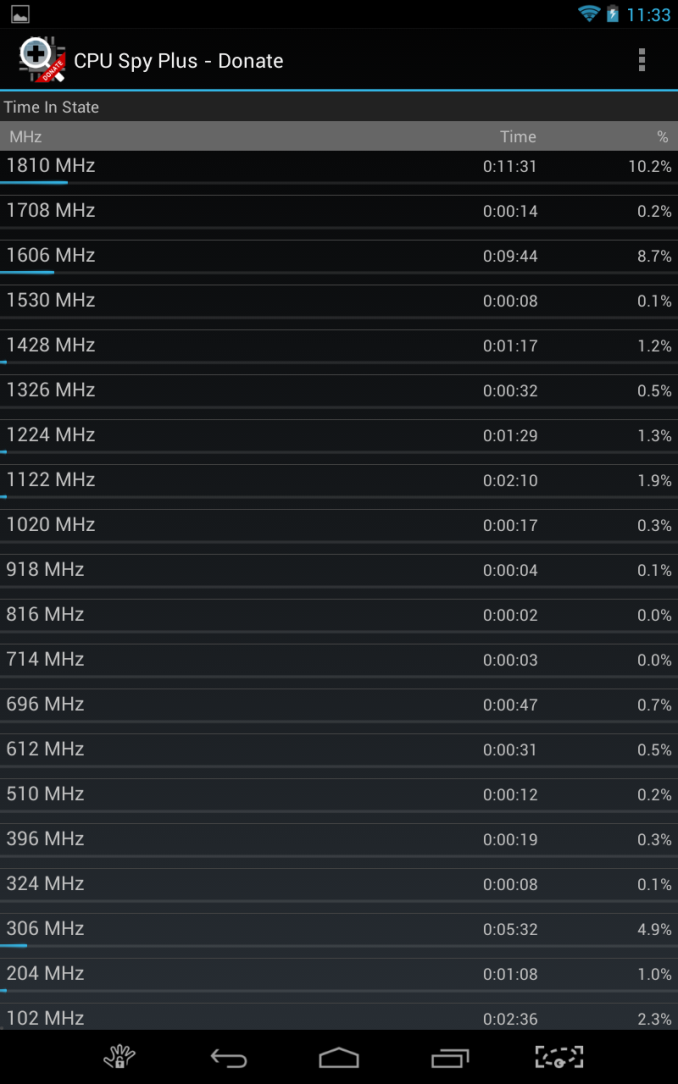
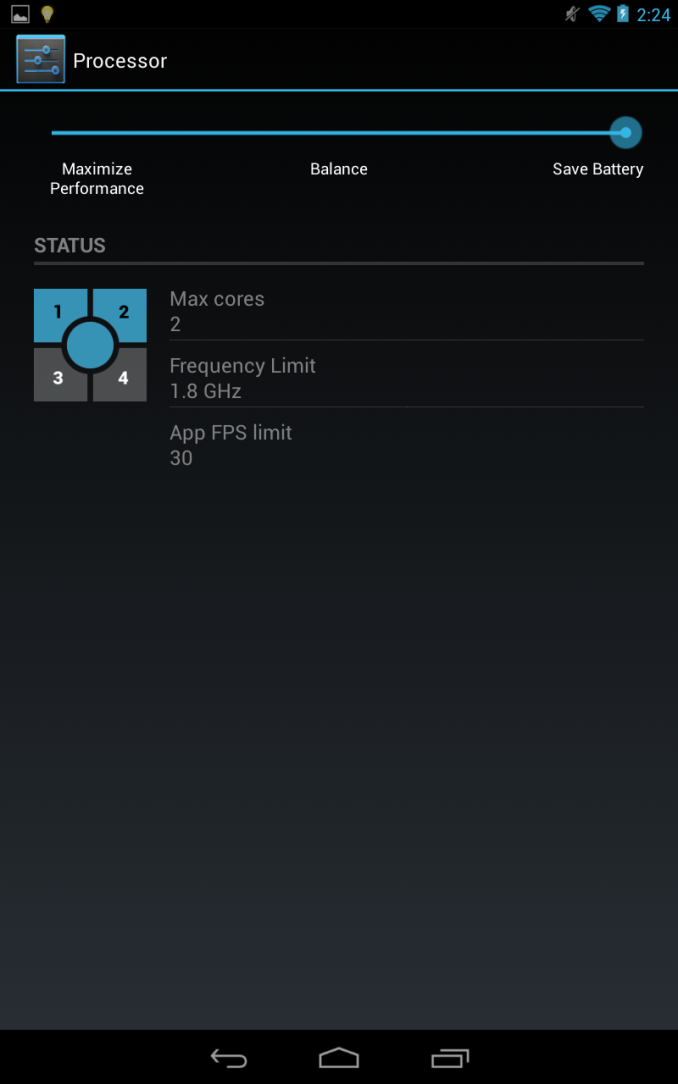








87 Comments
View All Comments
Anonymous Blowhard - Tuesday, November 12, 2013 - link
Didn't see any mention of this; I see it does have Console Mode, but what about the NVIDIA GamePad Mapper software?geniekid - Tuesday, November 12, 2013 - link
The one reason I'd get this over the Nexus 7 is for the microSD slot.Also, I would think the lower resolution would come with some battery savings. I wonder if the inefficiency here lies with the SoC or the display (or something else).
PC Perv - Tuesday, November 12, 2013 - link
What did you use to take pictures? They are horrendous.drexnx - Tuesday, November 12, 2013 - link
feel it all around? lolgeniekid - Tuesday, November 12, 2013 - link
I can't wait for the day when the state of mobile gaming will be such that reviews can focus on actual gameplay benchmarks instead of all the synthetics.Pirks - Tuesday, November 12, 2013 - link
It's already like that on iPad but why would you even be interested in any benchmarks on iPad?Simon42 - Tuesday, November 12, 2013 - link
You said nothing about the sub-par 1gb of ram! Do you have a test that could contrast it with 2gb devices, or at least some subjective impressions? I like to multitask a lot, open 10 tabs and switch from one app to the other, and I highly doubt this thing's superfast CPU can fully compensate for it. I've always felt that my Android devices improved mostly because they went from 512mb and 1gb to 2gb; that with my expectations and with the way I use my devices it has been more beneficial than upgrading to Qualcomm's excellent quad cores.I'm actively looking at something better suited to my needs and with a wider screen than my current 2013 Nexus 7. An SD card to exceed 32gb cheaply - I have lots of PDFs and MP3s - is crucial because any storage becomes slow when full (and now 4.3's TRIM eats battery when it has to work hard) and the stylus implementation looks great, but I won't trade the Nexus' glorious screen, RAM and amazing battery life for some extra speed I hardly need and which is probably only available when RAM is not full.
I was awaiting HP's Slate 8 and I was getting excited about its screen, but it's now confirmed that it too has only 1gb RAM so I'll want to try it but I probably won't buy it unless it multitasks just as well as what I currently have. Does anyone know of any upcoming Tegra 4 device with enough RAM and under 500 grams? I might have to wait for Chinese tablets with that combo and leftover iPad mini screens (Retina or not) or 8.9 inch full HD panels...
Dribble - Tuesday, November 12, 2013 - link
Tend to agree - the 1GB or ram would be a killer for me. Think they would have been better charging $250 for a 2GB ram and a full HD screen. Then you might think nexus is nice but for $20 I get an SD card, stylus better sound and a faster soc. Easy sell.ddriver - Tuesday, November 12, 2013 - link
iphones have 1 gb of ram, so "logically" 1 gb ram is the best amount of ramzodiacsoulmate - Tuesday, November 12, 2013 - link
not on android, but kitkat is opitimized for 512 and less ram? maybe facebook app will stop taking up 80mb of ram...